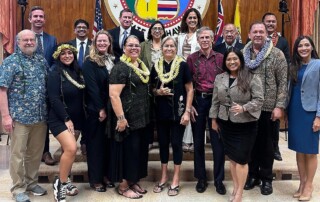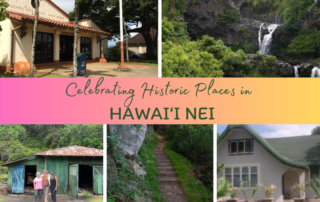Four Properties Added to the Hawai‘i & National Registers of Historic Places
The Hawai‘i Historic Places Review Board added three properties to the Hawai‘i Register of Historic Places in November 2022. Learn more about their history, characteristics and significance. Properties are eligible for inclusion in the register if they meet one or more criteria of historic significance: A) association with broad patterns or events; B) associations with historic individuals; C) architecture and design; or D) likely to yield important information. Click on the links to access the Register nomination forms of each property. Wo Fat Chop Sui (Suey) House, O‘ahu Wo Fat as a corporate entity in its various permutations survived destruction in the Chinatown fires of 1886 and 1900, eventually moving to the corner of Hotel and Maunakea Streets in Honolulu’s Chinatown. The current iteration, the Wo Fat Chop Sui (Suey) House was built in 1937 by W.S. Ching and designed by Yuk Ton Char, a successful Chinese American architect practicing in Honolulu at the time. The property is significant under Criterion A in the areas of Ethnic/Heritage (Asian) and Commerce and under Criterion C in the area of Architecture. Stylistically, the building displays architectural motifs indicative of traditional Chinese architecture. Noteworthy elements include the curved green tile roof, decorative brackets, three-story pagoda, and distinctive signage with Hanzi script. The rare combination of architectural detailing draws inspiration from traditional Chinese motifs as well as the geometric forms associated with the Art Deco style. Part of a commercial block, Wo Fat Chop Sui was supported by Chinese and Japanese communities. The main floor housed a bar and specialty shop; the second floor was the main dining room while the Chinese pagoda on the third floor was reserved as the Dragon room for private parties. Though ownership [...]











